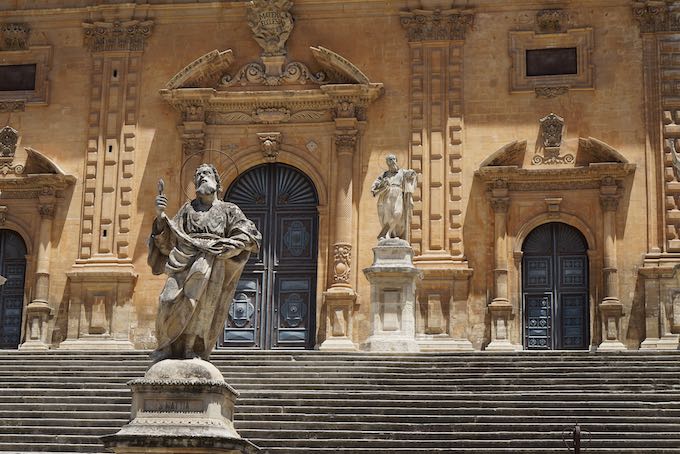
When people ask me for advice about traveling to Sicily, there is no easy answer. You would think that since Sicily is an island, and I’ve been coming here since I was a child, that it would be easy for me to hand out advice. But for me, Sicily is like an entirely separate country, and within that country each corner is different from the next. Do you want some of the most gorgeous coastline in Italy? Or maybe endless wheat fields? I once found myself watching tomatoes dry in the sun, and that pretty much sums up Sicily to me. And of course there is always wine. There obviously is no easy answer about which direction to head when in Sicily.
But if your taste runs on the sweet side, then the answer becomes a no-brainer. The southeastern corner of Sicily is like one big sugary extravaganza.
The towns of Noto, Ragusa, Modica, and Scicli are some of the most spectacularly, breathtakingly beautiful architectural confections in Italy. And I do not use the word confection lightly. The style and decorations of these Baroque palazzi and churches are like iced wedding cakes gone wild.
While you are probably familiar with the ricotta and almond pastries from this part of the world (cannoli, cassate and cookies from the now famous Caffe Sicilia in Noto) you may not have heard of the exotic traditions surrounding chocolate.
Chocolate first came to Sicily from the New World via the Spaniard conquistadors in the sixteenth century. One of the traditions to survive the earthquake, which leveled the this part of the world in 1693, was the tradition of using chocolate in both sweet and savory dishes. But it wasn’t until the nineteenth century that the Antica Dolceria Bonajuto, located in the town of Modica, brought this unique form of chocolate to international fame. While much of the world was turning to chocolate emulsified with sugar and milk fats, adopting the processes known as conching and tempering (think Cadbury), the Modica style of chocolate-making remained closer to the original Aztec xocolatl, a cold process of turning bean into bar that resulted in a fruitier, somewhat bitter and decidedly granular bar. Another holdover from Mexico is the addition of spices from the New World, including vanilla and hot red pepper.
Today Bonajuto is the oldest chocolate maker in Italy, and continues this cold process not only producing chunky dark bars but also producing pastries that preserve the tradition of mixing sweet and savory.
Bonajuto is located just off the main Corso and its wood-paneled shop is a virtual museum to the carefully preserved way of making chocolate. The cabinets are also filled with actual chocolate, but you might not realize that it’s also a pastry shop, unless you watch the locals stop by to either pick up their neatly wrapped packets of preordered pastries or to ask for a cannolo, which comes from the back workshop, freshly filled with creamy ricotta to order.
Even though I’ve been coming to Modica for intense chocolate fixes for years, I still love watching the sensual and physical process of making the bars of chocolate. Each tin mold is carefully filled with a perfectly measured amount of the grainy chocolate paste, then placed in a thick wooden tray. Once all of the molds are filled, the chocolatier grabs the tray by both hands and begins beating it in a rhythmic manner against the cold, hard marble counter. Five minutes of this cacophony forces the air bubbles up and out of the chocolate to make sure that each bar is smooth and glistening. Once rested, the paste solidifies, is popped out of its mould, and neatly wrapped by hand in thick sheets of paper emblazoned with the store’s turn-of-the-century logo.
During a recent trip I was happy to discover a pastry I’d never had before: mpanatigghi. And don’t worry, I can’t pronounce it correctly either. These small dry pastries are actually based upon empanadas and the filling mixes both chocolate (not surprising) with ground meat (extremely surprising). The sweet was devised as a way to preserve meat, especially when traveling for long distances. Although I saw the actual process, and can assure you there is meat in those cookies, the final taste is overwhelmingly chocolate, although maybe a bit richer and fuller than usual.
And in case you were wondering, I did end up buying a few to take on my travels. And yes, they were the perfect snack for my ‘long’ trip back to Rome.
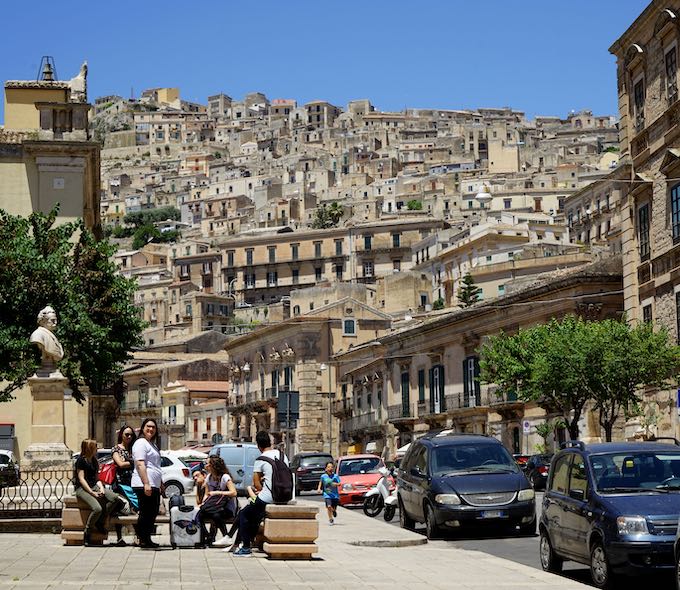
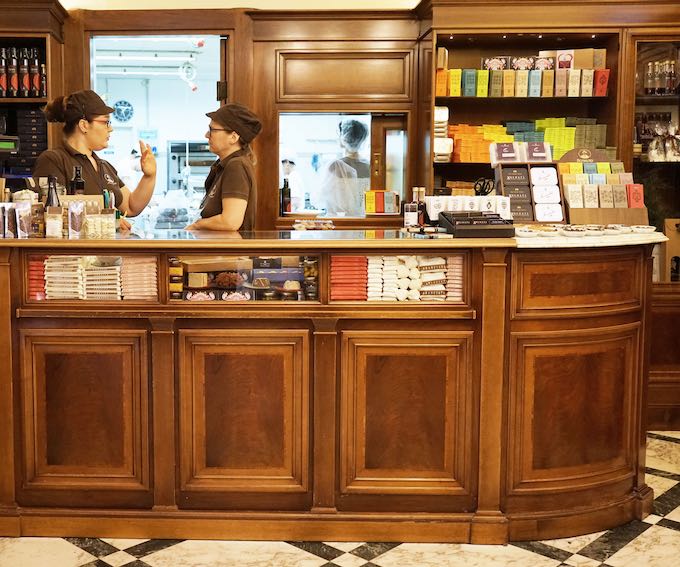
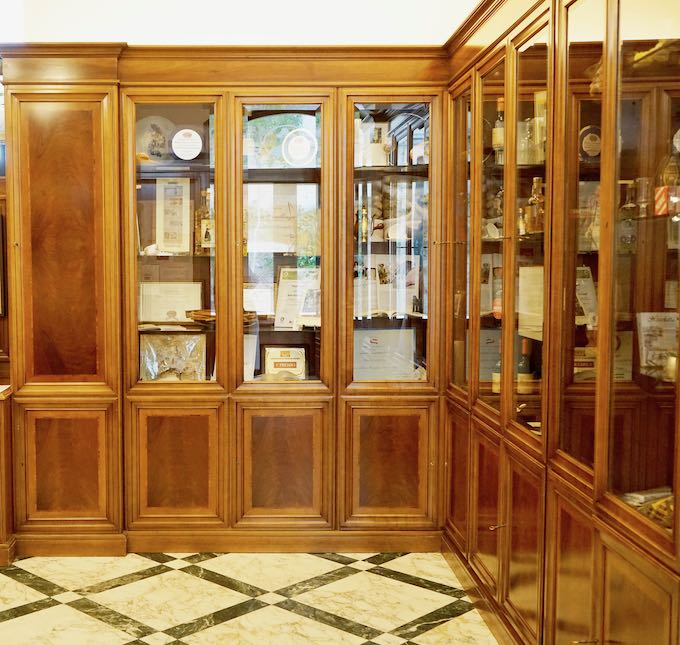
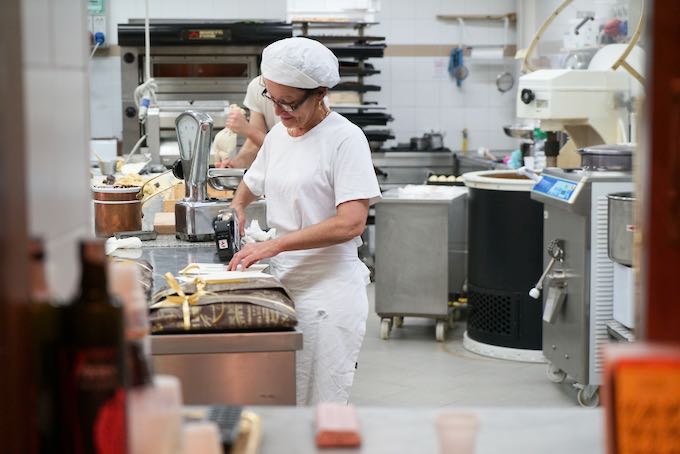
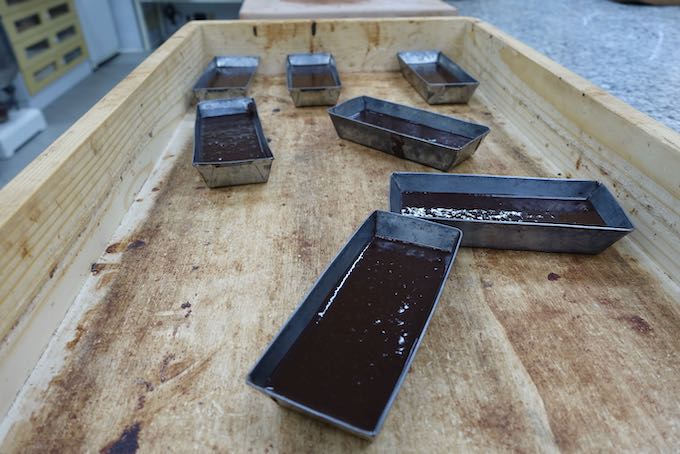

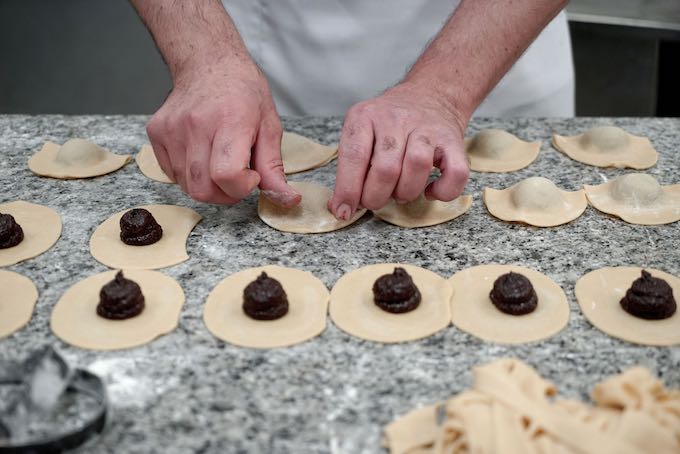
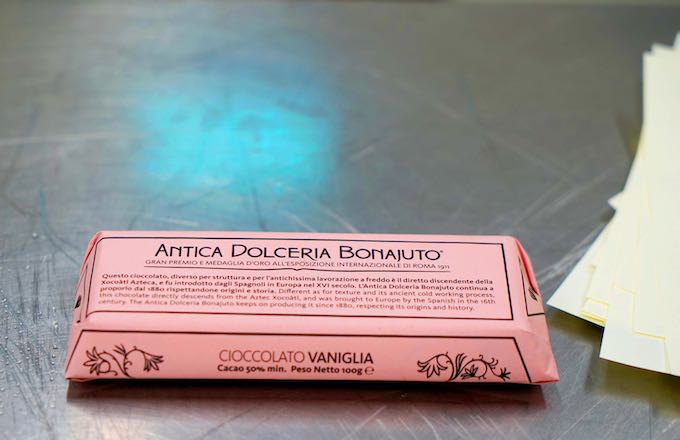
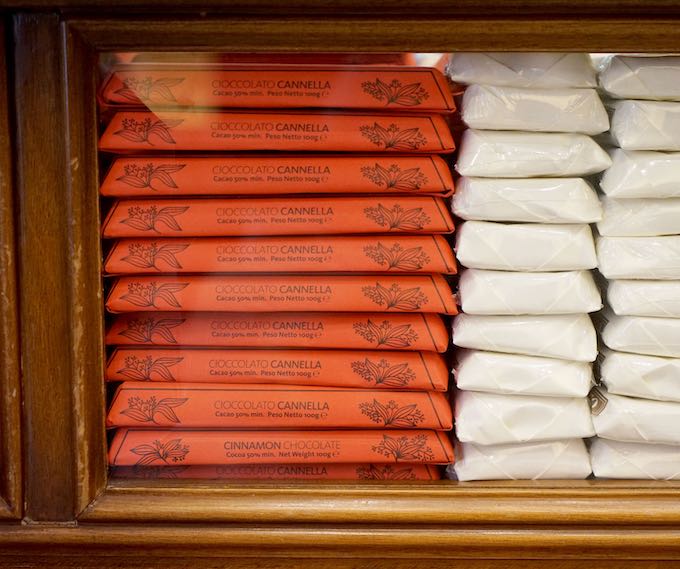
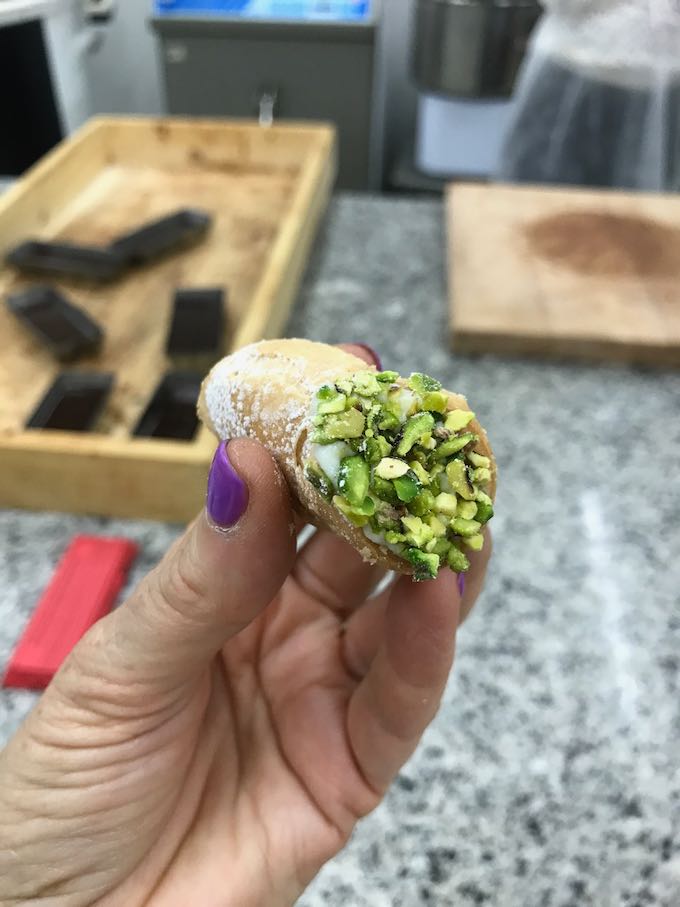
L’Antica Dolceria Bonajuto
Corso Umberto I
Modica
This blog post is an excerpt from my book Eating My Way Through Italy.
If you’d like to join me the next time I am eating my way through Sicily, you can! You can read all about my Week in Sicily Tours for 2021 here.
Leave a Reply (comments are moderated)